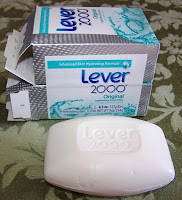 Years ago I went to see a client at Unilever in New York whom I’d worked with previously in Australia. At the time he was being fêted as Mr Innovation in the company worldwide, having presided over the tremendous success of a new soap brand. His opinions were sought continuously on how it should be done, on the terrific culture he’d built, on every aspect of his innovation skills.
Years ago I went to see a client at Unilever in New York whom I’d worked with previously in Australia. At the time he was being fêted as Mr Innovation in the company worldwide, having presided over the tremendous success of a new soap brand. His opinions were sought continuously on how it should be done, on the terrific culture he’d built, on every aspect of his innovation skills.We chatted for a while about the brand and then I said: “You know, we were pretty happy about the role we played.”
“Really? he said. “I never heard about that. Surely not.”
“Well, yes,” I said, “we facilitated the workshop when the basic brand idea was created.”
“No! I can’t believe it. I would have been told.”
“Well, I brought along the minutes from the meeting. Here – take a look.”
By this time there’s no doubt he was somewhat embarrassed.
How could this disconnect have happened?
Quite simply, he was the third team leader on the project. There had been one at the inception. That’s when we had been involved. Then one who managed the development of all aspects of the mix into test market. Then, finally, my friend, who had brilliantly led the rollout coast-to-coast.
And, in the handovers, no mention had been made of our part in it.
Is good creative facilitation so unimportant, so forgettable? Maybe it is. But, without it, would the brand ever have been created?






